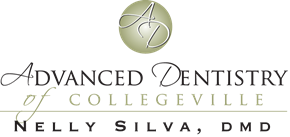What Is A Periodontist?
A periodontist is a dental professional that specializes in the prevention, diagnosis, and treatment of gum disease, as well as the placement of dental implants. Periodontal care is often needed when patients have contracted a serious gum disease, or when they are considering replacing their dental implants.
The Basics of Gum Disease
The periodontal tissues include the gums, jawbone and periodontal ligaments. These tissues provide the teeth with support and help hold them in place. Gum disease occurs when the periodontal tissues are infected by a build-up of plaque containing harmful bacteria. If plaque isn’t removed through daily maintenance like brushing and flossing, then the plaque could harden, eventually becoming what is referred to as tartar. If it isn’t treated promptly, this substance can breakthrough the healthy wall of the gum-line, ultimately resulting in the loss of teeth. If you began to notice any symptoms associated with gum disease, you should consult with a periodontist as soon as possible.
Periodontal Disease Treatments
Periodontal treatments vary depending on the type of disease as well as its severity. If diagnosed and treated at an early stage it will most likely be treated with nonsurgical techniques. However, if the condition worsens then a periodontist may decide that surgical therapy is necessary. Here are some of the methods for treating Periodontal Diseases:
- Non Surgical-Treatments
- Gum Graft Surgery
- Laser Treatment
- Regenerative Procedures
- Dental Crown Lengthening
- Dental Implants
- Pocket Reduction Procedures
Bone Grafting
What is Bone Grafting?
Over a period of time, the jaw bone associated with missing teeth atrophies and is reabsorbed. This often leaves a condition in which there are poor quality and quantity of bone suitable for the placement of dental implants. In these situations, most patients are not candidates for the placement of dental implants.
With bone grafting, we now have the opportunity to not only replace bone where it is missing, but we also have the ability to promote new bone growth in that location. This not only gives us the opportunity to place implants of proper length and width, it also gives us a chance to restore functionality and aesthetic appearance.
Types of Bone Grafts
Autogenous Bone Grafts
Autogenous bone grafts, also known as autografts, are made from your own bone, taken from somewhere else in the body. The bone is typically harvested from the chin, jaw, lower leg bone, hip, or the skull. Autogenous bone grafts are advantageous in that the graft material is your own live bone, meaning it contains living cellular elements that enhances bone growth, also eliminating the risk of your body rejecting the graft material since it comes from you.
However, one downside to the autograft is that it requires a second procedure to harvest bone from elsewhere in the body. Depending on your condition, a second procedure may not be recommended.
Allogenic Bone
Allogenic bone, or allograft, is dead bone harvested from a cadaver, then processed using a freeze-dry method to extract the water via a vacuum. Unlike autogenous bone, allogenic bone cannot produce new bone on its own. Rather, it serves as a framework, or scaffold, over which bone from the surrounding bony walls can grow to fill the defect or void.
Xenogenic Bone
Xenogenic bone is derived from a non-living bone of another species, usually a cow. The bone is processed at very high temperatures to avoid the potential for immune rejection and contamination. Like allogenic grafts, xenogenic grafts serve as a framework for bone from the surrounding area to grow and fill the void.
Both allogenic and xenogenic bone grafting have an advantage of not requiring a second procedure to harvest your own bone, as with autografts. However, because these options lack autograft’s bone-forming properties, bone regeneration may take longer than with autografts and have a less predictable outcome.
Bone Graft Substitutes
As a substitute for using real bone, many synthetic materials are available as safe and proven alternatives, including:
Demineralized Bone Matrix (DBM)/Demineralized Freeze-Dried Bone Allograft (DFDBA)
This product is processed allograft bone, containing collagen, proteins, and growth factors that are extracted from the allograft bone. It is available in the form of powder, putty, chips, or as a gel that can be injected through a syringe.
Graft Composites
Graft composites consist of other bone graft materials and growth factors to achieve the benefits of a variety of substances. Some combinations may include collagen/ceramic composite, which closely resembles the composition of natural bone, DBM combined with bone marrow cells, which aid in the growth of new bone, or a collagen/ceramic/autograft composite.
Bone Morphogenetic Proteins
Bone morphogenetic proteins (BMPs) are proteins naturally produced in the body that promote and regulate bone formation and healing.
For more information about Bone Grafting, you may schedule an appointment with our Periodontist to determine your best course of action.
